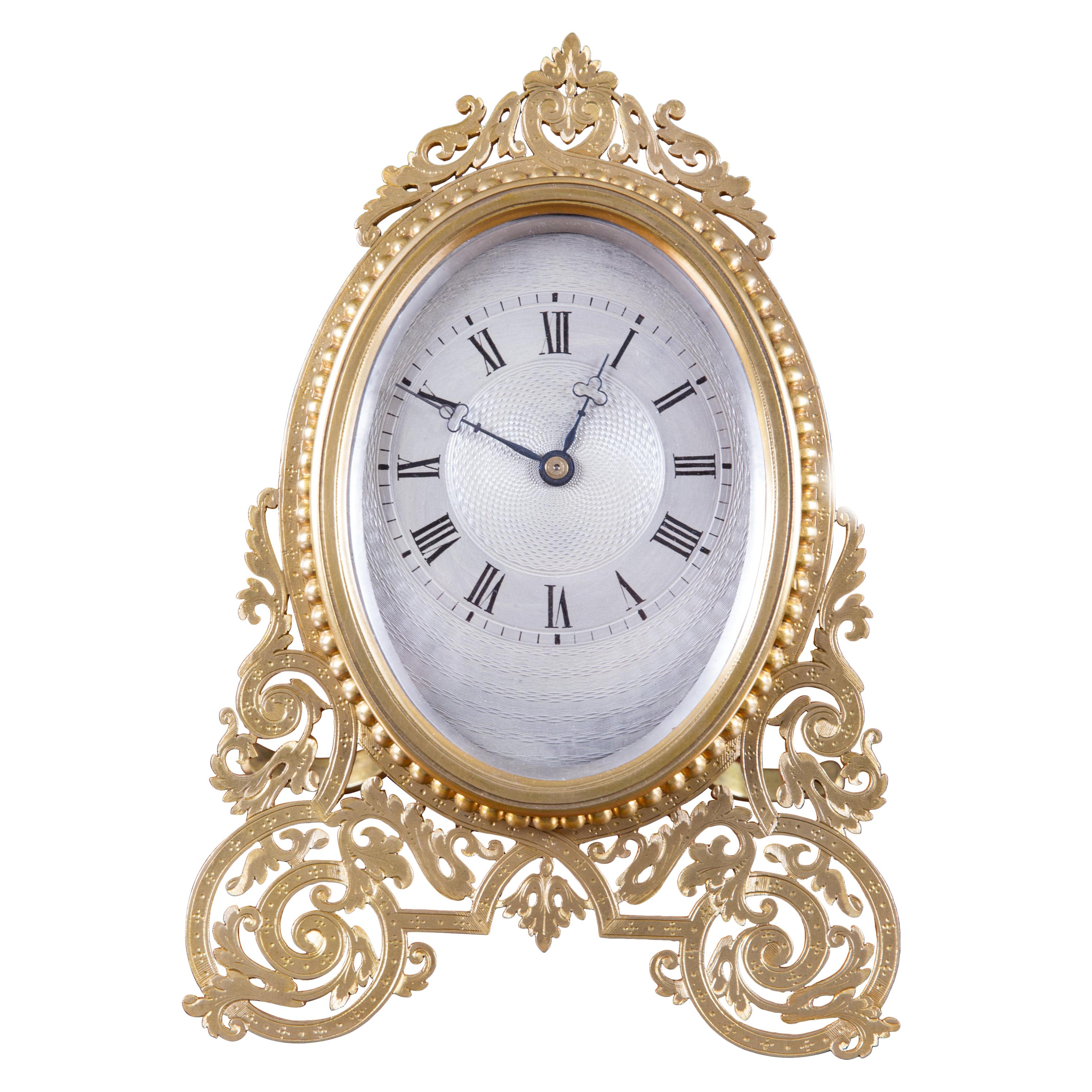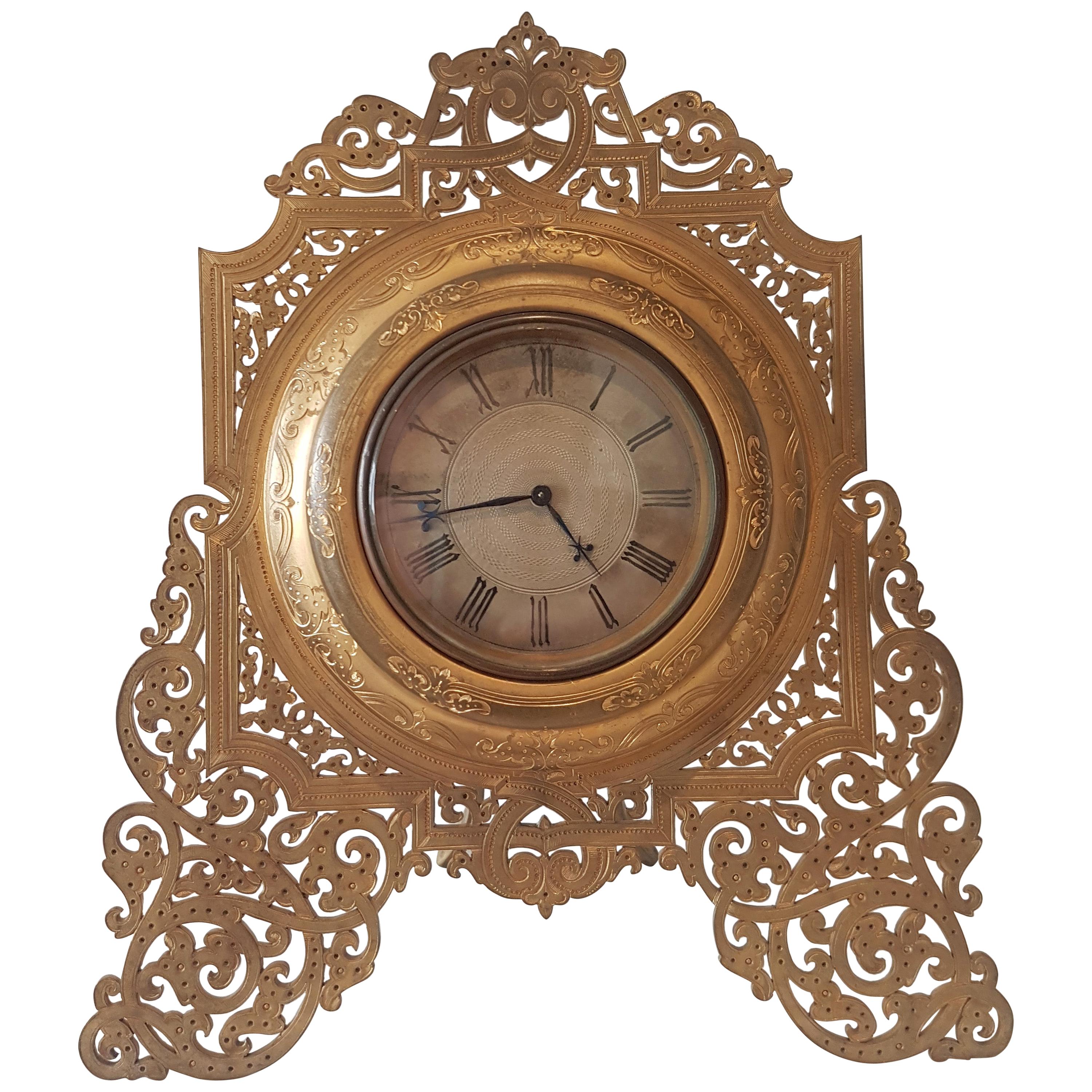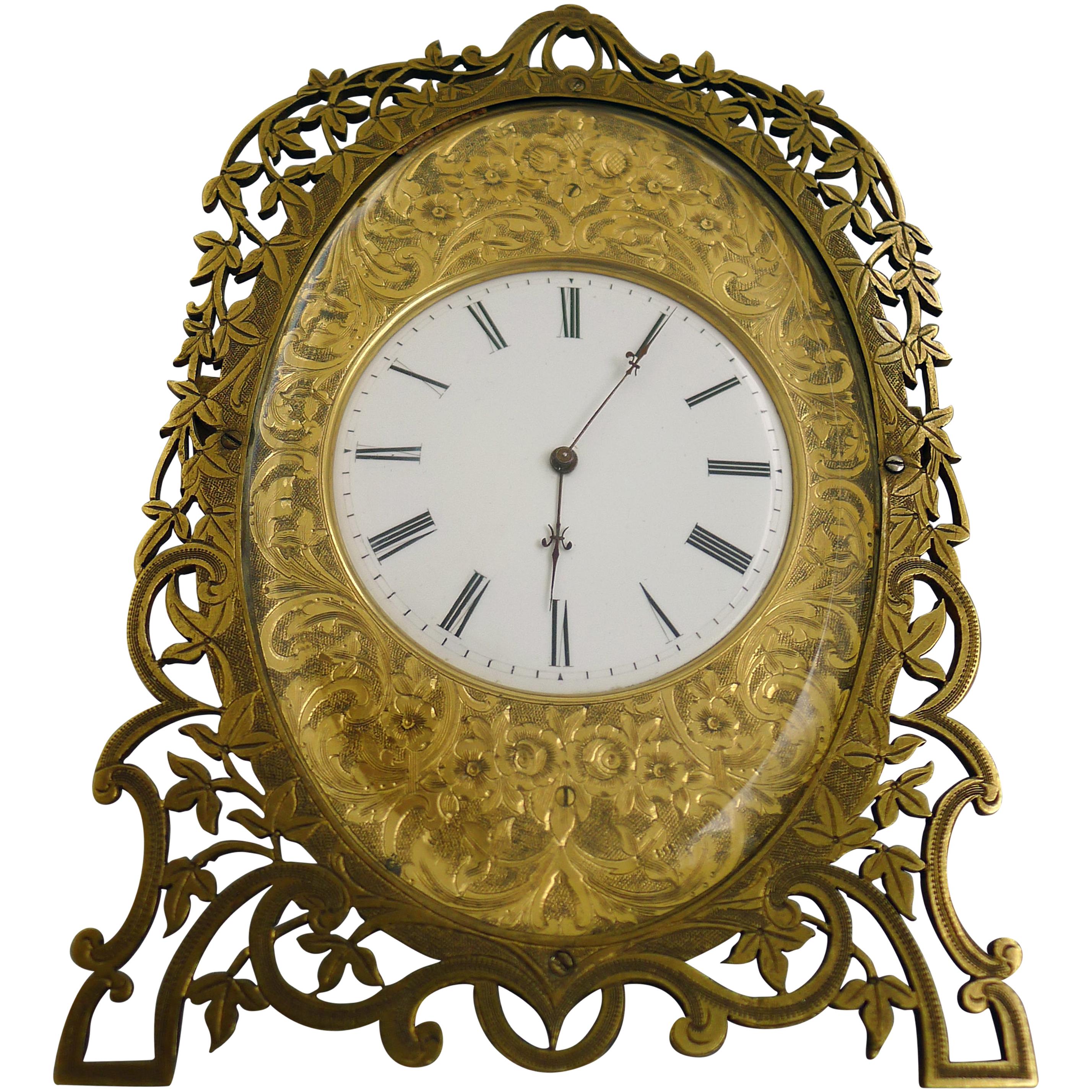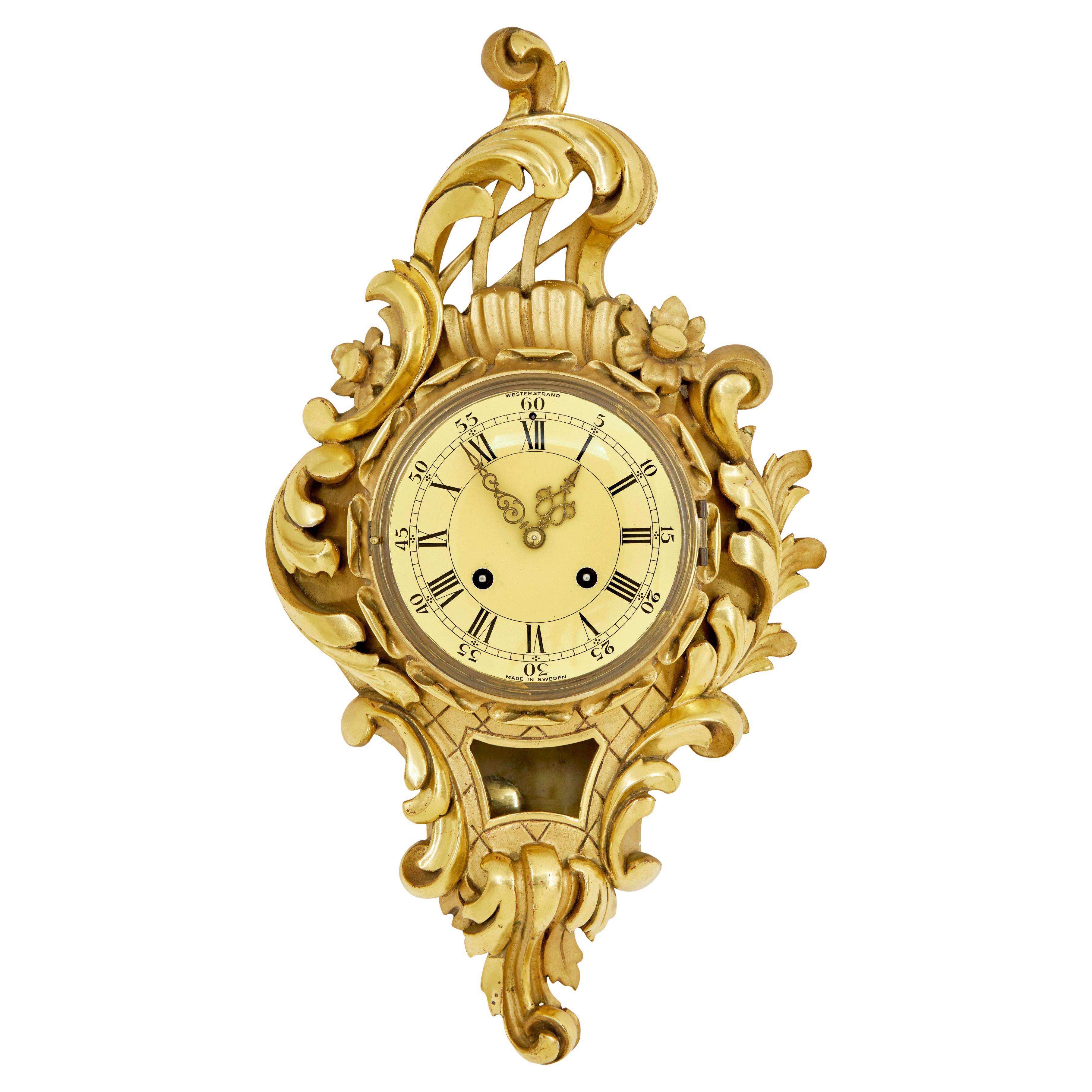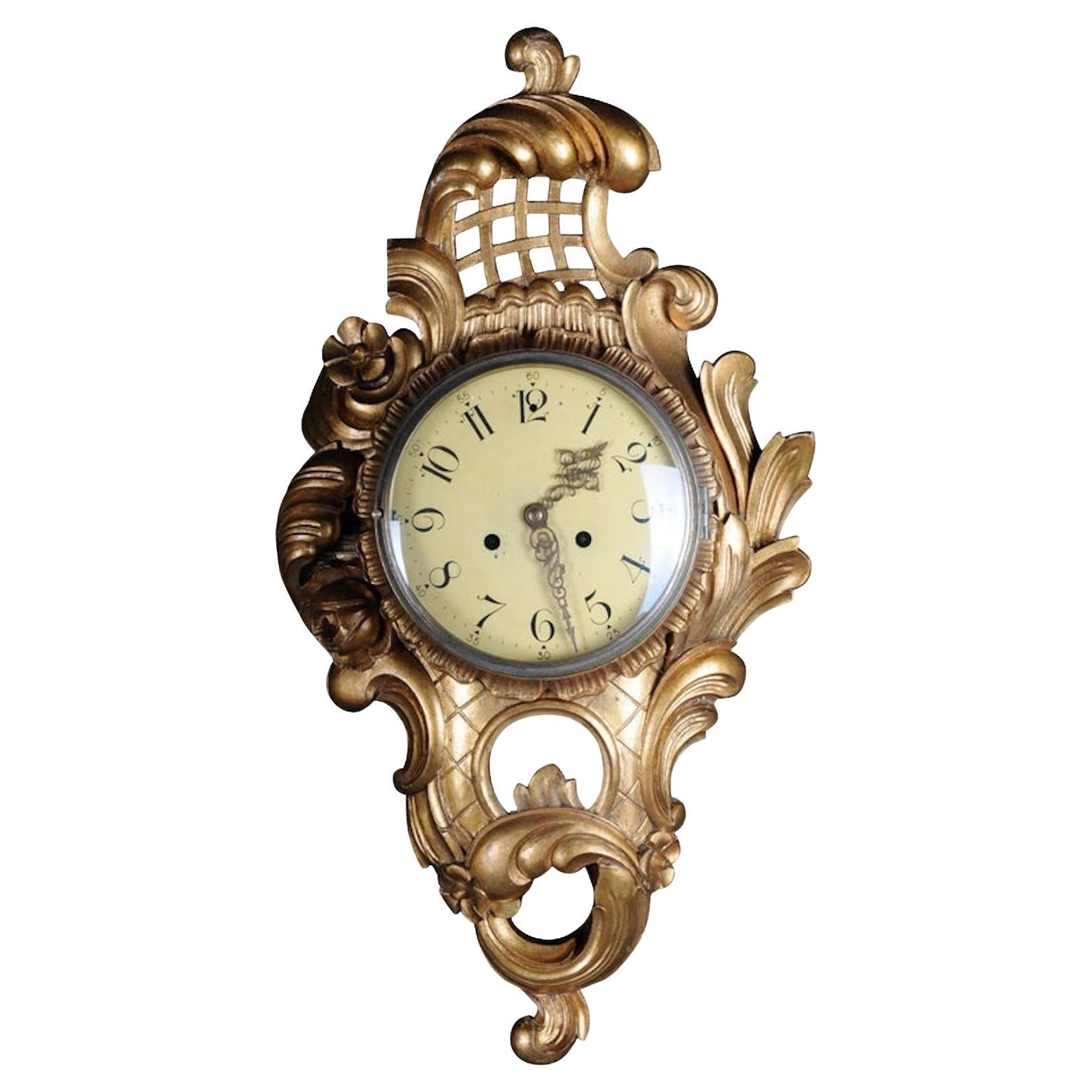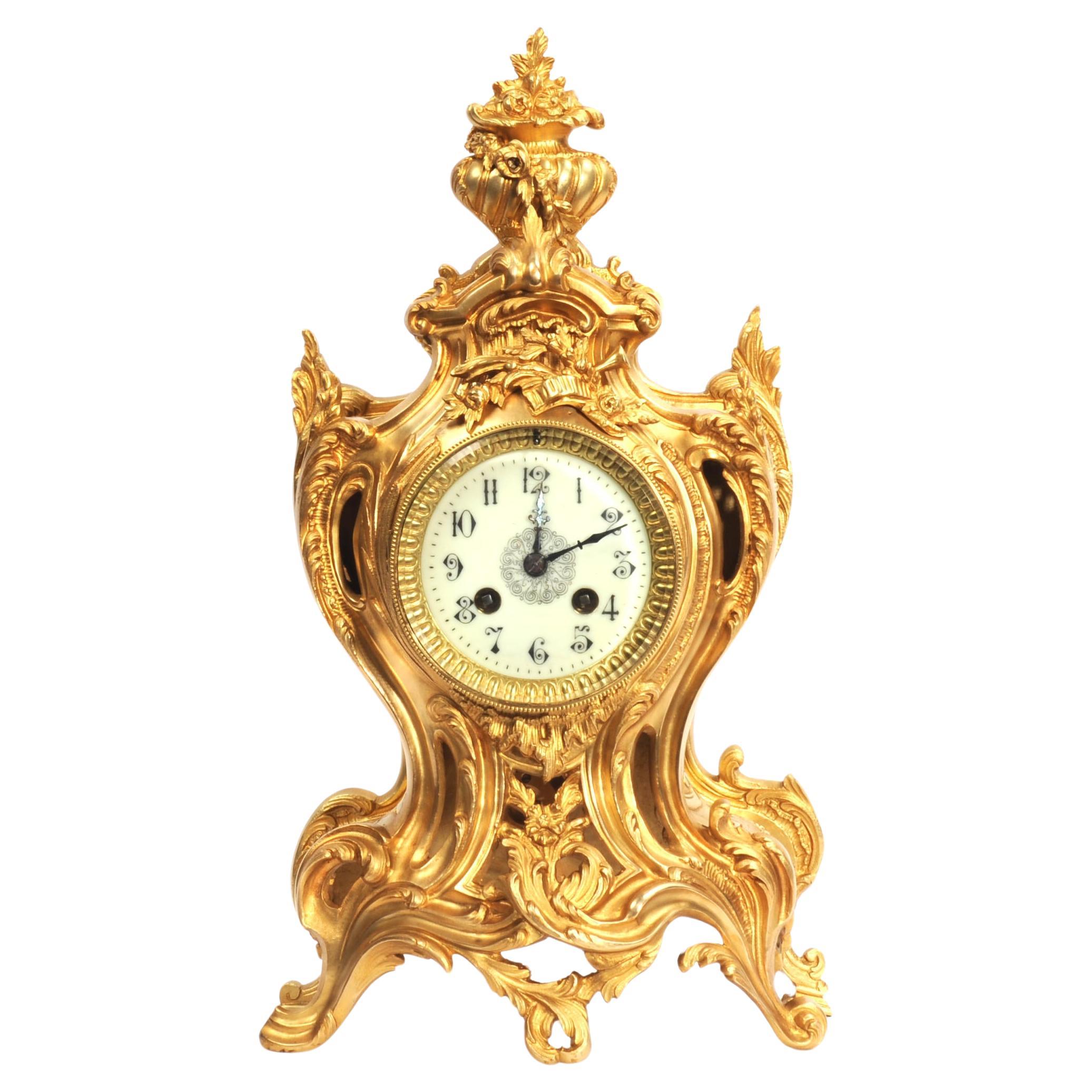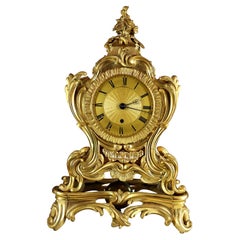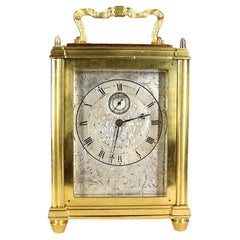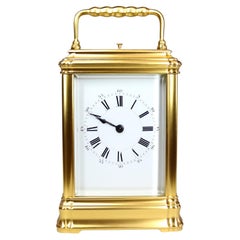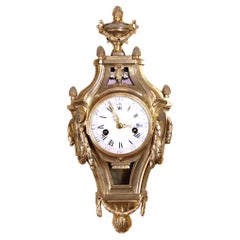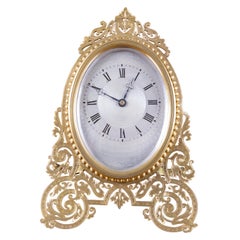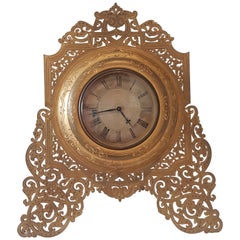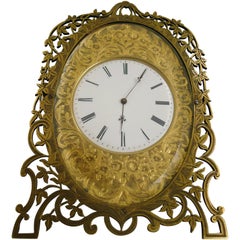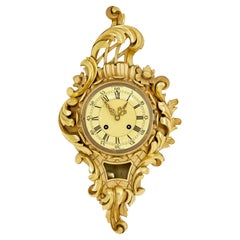Items Similar to A Strut Clock in The Manner of Thomas Cole by Howell, James & Co.
Want more images or videos?
Request additional images or videos from the seller
1 of 12
A Strut Clock in The Manner of Thomas Cole by Howell, James & Co.
$3,787.58
£2,825
€3,253.40
CA$5,313.41
A$5,797.89
CHF 2,999.65
MX$69,360.25
NOK 37,892.71
SEK 35,580.66
DKK 24,297.13
About the Item
This beautiful desk timepiece is a rare strut clock, in the form of a gilded scallop shell, with an engine turned silvered roman dial set behind a bevelled glass with distinctive fleur de lis hands. The the fine movement has an excellent lever escapement. Signed on the back Howell, James & Co and numbered 283, we can date this clock to 1860-1870 based on exhibition catalogues.
This clock may well have been a love token or engagement gift, the scallop shell being a symbol of Venus, Goddess of Love, and would make the perfect romantic gift.
The partnership of Howell and James was founded in 1819 by James Howell and Isaac James. Originally silk merchants and retail jewellers, they were based at 5, 7 and 9 Regent Street, London. Isaac James left the partnership in 1838, with James Howell, Henry Gillett, Thomas Stroud and William Sedgwick continuing the business under the name of Howell, James & Co.
Howell, James & Co exhibited at the Great Exhibition of 1851 and the International Exhibition of 1862 to great fanfare, they exhibited similar strut clocks to this model. Enjoying heightened success, they opened further display rooms at their premises on Regent Street in 1860. In 1884, the remaining partners, Thomas Buxton Morrish, John Gow and Josiah Willey dissolved the business; it became a limited company and their name changed to Howell & James Ltd. The company was finally closed in 1911.
The two Cole brothers, James Ferguson (1798- 1880) and his younger brother Thomas (1800-1864) made an indelible mark on English horology in the 19th century. J.F.Cole has been dubbed 'The English Breguet' because of the exceptional watches and travelling clocks he produced. Thomas was awarded a medal for "excellence of taste and design" in the 1862 London Exhibition, and the leader of the jury, Charles Frodsham wrote "nothing could exceed the beauty of design and good taste of the varied models and general excellence of workmanship." As well as signing his own name, Thomas was happy to supply various high class retailers including Howell, James &Co. Most of Thomas's output was concentrated on his strut timepieces, usually less than 6 or 7 inches in height.
- Similar to:Thomas Cole (Clockmaker) (Clockmaker)
- Dimensions:Height: 11.5 in (29.21 cm)Width: 12.5 in (31.75 cm)Depth: 12 in (30.48 cm)
- Style:Baroque Revival (In the Style Of)
- Materials and Techniques:
- Place of Origin:
- Period:
- Date of Manufacture:1860-1869
- Condition:Wear consistent with age and use.
- Seller Location:Amersham, GB
- Reference Number:Seller: 1541stDibs: LU9135236380932
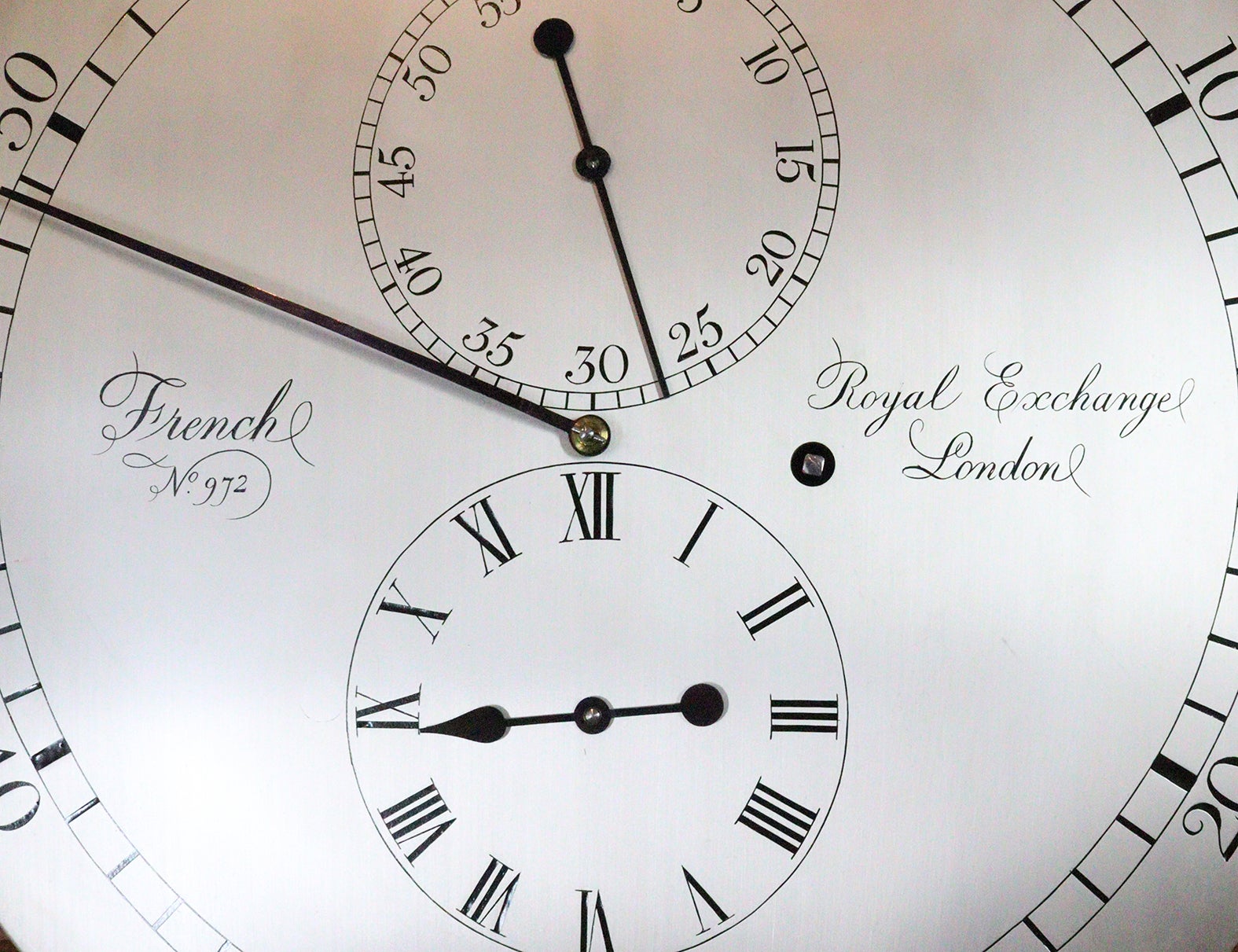
About the Seller
No Reviews Yet
Vetted Professional Seller
Every seller passes strict standards for authenticity and reliability
Established in 2021
1stDibs seller since 2023
7 sales on 1stDibs
Typical response time: 1 hour
- ShippingRetrieving quote...Shipping from: Amersham, United Kingdom
- Return Policy
More From This Seller
View AllSingle Fusee Mantel clock by Hay London
By HAY
Located in Amersham, GB
An unusual english single fusee mantel clock in a Louis XV style rocaille ormolu case in the french taste. The eight day fusee movement is of superb quality with a pendulum descendin...
Category
Antique Early 19th Century British Rococo Mantel Clocks
Materials
Bronze
Single Fusee Carriage Timepiece By Thomas Cole and James Cole, Retailed By Hunt
By Thomas Cole (Clockmaker)
Located in Amersham, GB
A miniature carriage clock timepiece by Thomas Cole and his brother James Fergusson Cole. The eight day single fusee movement with english lever escapement.
The case is decorated with the ‘Rose and Trellis’ pattern as seen on another of Coles clocks retailed by Edward Dent with the same handle and case construction ( JB Hawkins, “The Hawkins Pictorial Survey of Cole Clocks...
Category
Antique 1840s English William IV Carriage Clocks and Travel Clocks
Materials
Brass, Steel, Ormolu
Henri Jacot Carriage Clock with Strike Repeat Function
Located in Amersham, GB
This superb gorge cased carriage clock is beautifully gilded, with a crisp white enamel dial and a roman chapter ring and outer arabic minutes. The eight day two train movement is regulated by a slivered English lever platform escapement, striking on a blued steel gong, with hour repeat button.
The case is numbered 10135 throughout, this coupled with the maker’s mark showing the dates of awards on the front plate, means we can date the clock to between 1878 and 1889.
The front and back plates are both marked with Jacot stamps. The front with the medal stamp listing the exposition awards Jacot had won. Bronzes in 1855 and 1862, and silver medals in 1867 and 1878. This stamp did not change until 1889 when Jacot junior won the companies first gold medal. The back plate shows the parrot trademark stamp with the initials HJ which came into use in 1878.
The back of the dial is also signed by the enameller and numbered with the serial number. This is a very thoroughly marked and numbered clock in excellent condition.
Henri Jacot...
Category
Antique 1880s French Carriage Clocks and Travel Clocks
Materials
Brass, Enamel, Steel, Ormolu
Louis XV Cartel D'applique
Located in Amersham, GB
This beautiful small cartel clock dates from the late 1760’s. This rare survivor is in excellent original condition, the large circular eight day movement strikes the hours on a bell...
Category
Antique 1760s French Louis XV Wall Clocks
Materials
Brass, Enamel, Steel, Ormolu
Petit Sonnerie Carriage Clock in Gorge Case with original Gilding
Located in Amersham, GB
A handsome Petit Sonnerie Carriage clock in a Gorge case retaining much of its original gilding, the eight day movement with original silvered lever escapement, strikes on two nested...
Category
Antique 1860s French Carriage Clocks and Travel Clocks
Materials
Brass, Enamel, Steel
Goliath Four Glass Clock
By Samuel Marti
Located in Amersham, GB
This exceptionally rare table regulator of oversized proportions is deceptive in scale, from the movement and escapement to the pendulum every aspect o...
Category
Antique 1880s French Late Victorian Mantel Clocks
Materials
Brass, Enamel, Ormolu
$8,915
You May Also Like
Early Victorian Gilded Strut Clock in the Style of Thomas Cole
Located in Norwich, GB
Early Victorian Strut clock in the style of Thomas Cole.
Gilded frame with engraved scroll work, oval beaded bezel surrounding a beautiful e...
Category
Antique 1840s French Victorian Mantel Clocks
Materials
Brass
Large English Late 19th Century Ormolu Strut Clock in Manner of Cole
Located in London, GB
Large beautifully cut and engraved ormolu English Victorian strut clock in the manner of Cole. Silvered dial with engine turned centre with beaut...
Category
Antique 1860s English Table Clocks and Desk Clocks
Materials
Ormolu
Mid-19th Century Gilt Bronze Strut Clock in the Style of Cole
Located in London, GB
Mid-19th century gilt bronze strut clock in the style of Cole. Original gilding and very fine engraving make this a most attractive clock. The pierced ormolu frame gives a very light...
Category
Antique 1860s English Table Clocks and Desk Clocks
Materials
Enamel, Ormolu
Swedish mid century carved rococo revival gilt clock
By Westerstrand
Located in Debenham, Suffolk
Mid century rococo revival gilt clock by Westerstrand circa 1950.
Good quality rococo influenced clock by well known Swedish maker Westerstrand.
Fitted with a twin train 8 day move...
Category
Mid-20th Century Swedish Rococo Wall Clocks
Materials
Enamel
French Rococo Wall Clock 19th Century, Gold
Located in Berlin, DE
Solid wood hand-carved with rich rococo elements. Roman dial. Glazed.
Clockwork should be checked for accuracy.
Category
Antique 19th Century French Rococo Revival Wall Clocks
Materials
Wood
$562 Sale Price
51% Off
Antique French Gilt Bronze Rococo Clock by Samuel Marti
By Samuel Marti
Located in Belper, Derbyshire
A stunning original antique French gilt bronze clock by Samuel Marti. Beautifully made in he Rococo style, formed of sinuous curves of acanthus and scrolls, pieced to allow the pendu...
Category
Antique 19th Century French Rococo Mantel Clocks
Materials
Bronze
